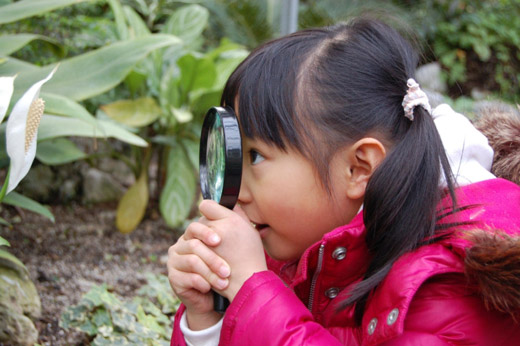No matter whether you live in the country or the city, your child can observe nature close to home. Help your child be a nature detective to discover the ecosystem existing right in their own backyard.
First, help your child identify what types of plants and animals they are realistically likely to see. If you have land in the country they’re likely to observe large mammals such as deer and racoons. If you have a tiny backyard in the city, help your child realize that they will be looking for small animals such as insects, lizards, birds, etc.
Depending on the age and interest of your child, prepare a plan to capture an image of the plants and animals they find. A digital camera works well, but if your child likes to draw they can turn the ecosystem hunt into an art project.
Over a span of a week or two, sit quietly outside with your child and observe nature. Have them find as many different plants and animals as possible. To find some of the more shy animals, help your child turn over rocks and other objects in the yard or on the porch. Try observing at different times of day, and even go outside with a flashlight at night to find animals that come out after dark.
For younger children you may just want to print out the photos and identify the different types of plants and animals found. They can make a collage or a notebook to display what’s living in their backyard. Older children may also want to research what each type of animal eats and design a food web based on that information. One method is to glue the images on a poster board. Then draw arrows going from the prey (or plant) to the predator. Older students can then examine their food web to infer other animals that might be a part of their backyard ecosystem that were never observed.
Whether you focus on the exploration or turn the project into an in depth ecology lesson, your child is sure to gain an appreciation for nature’s ability to sustain life anywhere!




